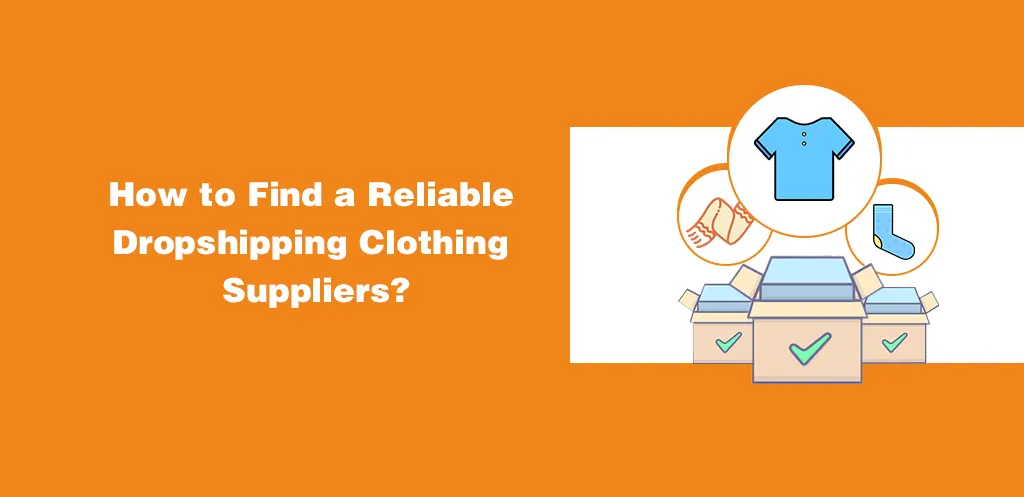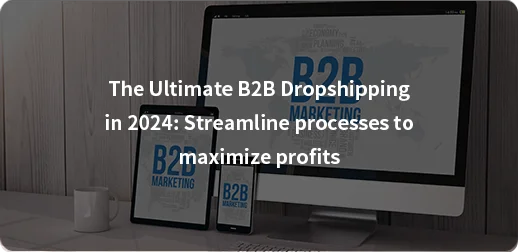In a dynamic and competitive modern business environment, strategies to enhance revenue and customer engagement have become paramount.
Cross-selling emerges as a strategic approach that aims to maximize both by offering customers complementary products or services alongside their primary purchases.
This technique leverages customer preferences and behaviors to create a more tailored and valuable shopping experience.
Delving into the realm of cross-selling unravels the intricate interplay between customer needs, data analysis, and strategic recommendations, ultimately shaping a synergistic relationship between profitability and customer satisfaction.
This article delves deeper into the mechanics of cross-selling, its benefits, and strategies, highlighting its role in modern business practices.
From e-commerce giants suggesting complementary products during the checkout process to fast-food chains proposing value-adding side items, cross-selling is ubiquitous across industries.
As we unravel the layers of this strategy, you’ll gain insights into how businesses employ data, consumer behavior analysis, and marketing prowess to implement cross-selling successfully.

What is Cross-Selling?
Cross-selling is a sales and marketing technique in which a company suggests or offers additional products, services, or upgrades to a customer who is already purchasing or has shown interest in a primary product or service.
The goal of cross-selling is to increase the overall transaction value, enhance customer satisfaction, and create a more comprehensive solution for the customer’s needs.
It involves identifying related or complementary products that align with the customer’s initial purchase, making their experience more valuable and convenient.
Cross-selling is rooted in understanding consumer behavior and preferences, as well as identifying opportunities to offer products that naturally enhance the original purchase.
By leveraging customer data and insights, businesses can provide personalized recommendations that are relevant to each customer.
This approach not only drives additional revenue for the company but also helps build stronger customer relationships and encourages repeat business.
How Does Cross-Selling Work?
Cross-selling is a nuanced sales technique that operates on a foundation of understanding customer behavior, predicting needs, and strategically offering additional products or services that align with a customer’s existing purchase or interests.
The aim is to enhance both the customer experience and the company’s revenue. Let’s delve into the intricate mechanics of how cross-selling works:
1. Customer Insight and Data Analysis
The process begins with a deep dive into customer data. Businesses gather information from various sources, including previous purchases, browsing history, demographic details, and even interactions with customer service.
This data helps paint a comprehensive picture of individual preferences and shopping patterns. Advanced analytics tools then mine this data to identify trends and connections between products, forming the foundation for effective cross-selling.
2. Product Association
Based on the insights gleaned from data analysis, businesses identify products or services that have a natural association with the customer’s primary purchase.
These products could be complementary, supplementary, or related in some way. The goal is to present options that genuinely enhance the customer’s experience, addressing needs they might have yet to consider.
3. Personalized Recommendations
Cross-selling thrives on personalization. Rather than offering generic suggestions, businesses tailor their recommendations to each customer’s profile.
This personal touch is achieved by leveraging data-driven insights to present relevant offers that align with the customer’s preferences and history.
4. Timely Presentation
The timing of cross-selling offers is critical. These suggestions are often presented when the customer is already engaged in the buying process.
For instance, during the online checkout process, a customer might be shown items commonly bought with the product they’ve added to their cart. This ensures that the suggested items are top of mind and resonate with the customer’s immediate needs.
5. Seamless Integration
Successful cross-selling doesn’t disrupt the customer’s experience. Instead, it seamlessly integrates additional options into the customer journey.
This integration can take various forms, such as displaying related items on a product page, offering bundle deals, or including cross-selling suggestions in follow-up emails.
6. Upselling vs. Cross-Selling
It’s essential to distinguish cross-selling from upselling. While cross-selling involves offering related or complementary products, upselling encourages customers to purchase a higher-tier or more expensive version of the product they’re considering.
Both techniques aim to increase revenue, but cross-selling focuses on expanding the customer’s basket with additional items.
What are the Benefits of Cross-Selling?
Cross-selling offers a range of benefits that encompass financial gains, customer satisfaction, and improved relationships.
By strategically presenting customers with relevant additional products, businesses can create a win-win situation where customers receive added value and businesses achieve their sales objectives.
Let’s explore each of these benefits in detail:
1. Increased Revenue
Cross-selling directly contributes to higher revenue by increasing the average transaction value. When customers add complementary or related products to their purchase, the total amount spent per transaction rises.
An online electronics store that suggests phone accessories to a customer buying a smartphone can significantly increase the total purchase amount.
2. Enhanced Customer Value
Cross-selling adds value to the customer’s overall experience by offering them additional products that complement their primary purchase. This creates a more comprehensive solution that addresses various aspects of their needs.
A customer buying a fitness tracker might also benefit from purchasing a heart rate monitor and wireless headphones for a complete workout experience.
3. Improved Customer Satisfaction
When customers are offered products that align with their preferences and needs, they perceive the transaction as more tailored and personalized. This leads to greater satisfaction with their purchase.
A customer who receives personalized cross-selling recommendations for skincare products when buying a foundation feels that the brand understands their beauty needs.
4. Strengthened Customer Relationships
Cross-selling demonstrates a business’s commitment to understanding its customers and fulfilling their requirements. This contributes to building stronger relationships and fostering loyalty over time.
A book retailer that recommends novels by an author similar to the one a customer just purchased showcases their dedication to curating a personalized reading experience.
5. Streamlined Shopping Experience
Cross-selling simplifies the shopping process for customers by presenting related options in one place. Customers can conveniently find all the items they need without searching across different categories.
An online grocery store suggests commonly bought ingredients for a recipe a customer is purchasing, saving them time searching for individual items.
6. Efficient Inventory Management
Cross-selling helps businesses manage inventory more effectively. Products that might have slower sales individually can be promoted through cross-selling, reducing the risk of overstocking and improving turnover rates.
A fashion retailer can promote less-popular clothing items by cross-selling them with popular accessories or shoes.

7. Enhanced Product Exposure
Cross-selling exposes customers to a wider range of products they might not have initially considered. This can lead to the discovery and exploration of items they find useful.
An online art supply store cross-sells sketchbooks and paintbrushes to a customer looking for oil paints, introducing them to new mediums.
8. Upsell Opportunities
While distinct from cross-selling, upselling opportunities can often arise within cross-selling interactions. Customers might opt for higher-end versions of complementary products, resulting in increased revenue.
A customer buying a laptop might be cross-sold a premium laptop bag, leading them to choose a higher-priced, better-quality bag.
How Can You Implement a Cross-Selling Strategy?
Implementing a successful cross-selling strategy requires careful planning, data analysis, and a customer-centric approach. By carefully planning and implementing these steps, you can create a cross-selling strategy that benefits both your customers and your business.
The key is to provide relevant, valuable suggestions that enhance the customer’s experience while contributing to increased sales and loyalty. Here’s a step-by-step guide to help you effectively implement a cross-selling strategy:
1. Product Bundles and Packages
Create bundled offerings that combine complementary products or services. This encourages customers to purchase multiple items together, often at a discounted price.
For instance, a fast-food restaurant offers a “Combo Meal” that includes a burger, fries, and a drink at a lower price than if customers purchased each item separately.
2. Personalized Recommendations
Use customer data and behavior analysis to provide tailored product recommendations based on their past purchases or browsing history.
An e-commerce website can suggest additional items that customers may like based on their previous shopping habits. For instance, if a customer buys a camera, the website might recommend a compatible lens or a camera bag.
3. Upselling During Checkout
Present higher-end or upgraded options to customers during the checkout process, enticing them to spend more on a better version of the product they intended to buy.
For instance, when booking a flight online, customers are offered the option to upgrade to business class with extra legroom and amenities for an additional fee.
4. Cross-Sell Through Email Marketing
Send targeted email campaigns that showcase related products or services to previous customers, encouraging them to return and make additional purchases.
For example, an online clothing store sends an email to a customer who recently bought a winter coat, suggesting scarves, gloves, and hats to complete the winter outfit.
5. In-Store Cross-Selling
Train your staff to identify opportunities for cross-selling when interacting with customers in a physical store. Encourage them to make relevant product suggestions.
For example, in a consumer electronics store, a salesperson may recommend a screen protector and a protective case when a customer purchases a new smartphone.
6. Loyalty Programs and Rewards
Reward customers for repeat purchases or for spending a certain amount by offering discounts or free products as an incentive to buy more.
For instance, a coffee shop offers a loyalty card, where after buying five coffees, the customer gets the sixth one for free.
7. Online Shopping Carts
On e-commerce websites, display related or complementary products in the shopping cart or as part of the checkout process to encourage additional purchases.
For instance, when a customer adds a laptop to their shopping cart, the website suggests adding accessories like a mouse, laptop bag, and antivirus software.

8. Educational Content
Provide customers with valuable content that educates them about how additional products or services can enhance their initial purchase.
For example, a fitness equipment retailer offers free online workout tutorials for customers who buy exercise machines, demonstrating how additional fitness accessories like resistance bands or dumbbells can improve their workout experience.
What are the Challenges of Cross-Selling?
Implementing a cross-selling strategy can be highly beneficial, but it’s important to be aware of the potential challenges that may arise.
By being aware of these challenges and proactively addressing them, you can design and implement a cross-selling strategy that enhances customer satisfaction, boosts revenue, and builds lasting customer relationships.
Addressing these challenges can help ensure the success of your cross-selling efforts. Here are some common challenges associated with cross-selling:
1. Relevance and Customer Perception
Suggesting products that are not relevant to the customer’s needs can come across as pushy and damage the customer experience. If customers feel like they’re being pressured into buying unnecessary items, it can erode trust.
Solution: Prioritize relevance and personalization in your cross-selling recommendations. Use data analysis to understand customer preferences and only suggest items that genuinely enhance their primary purchase.
2. Privacy Concerns
Customers are becoming increasingly concerned about how their data is being used. If cross-selling efforts seem invasive or rely on collecting excessive personal information, customers may become wary.
Solution: Be transparent about data usage and privacy policies. Obtain customer consent for data collection and ensure that you comply with relevant data protection regulations.
3. Overwhelming Customers
Bombarding customers with too many cross-selling suggestions can overwhelm them and lead to decision fatigue. Too many choices can hinder the purchasing process.
Solution: Limit the number of cross-selling suggestions and present them at appropriate points in the customer journey. Focus on quality rather than quantity.
4. Incorrect Assumptions
Relying solely on algorithms and data analysis might lead to incorrect assumptions about customer preferences, leading to ineffective cross-selling suggestions.
Solution: Combine data analysis with customer feedback and qualitative insights. Regularly review and adjust your cross-selling strategy based on actual customer interactions.
5. Negative Customer Perception
If customers feel that cross-selling is solely a profit-driven tactic and not aimed at enhancing their experience, it can lead to a negative perception of your brand.
Solution: Communicate the value of cross-selling to customers. Clearly explain how the additional products or services can benefit them and provide a more comprehensive solution.
6. Product Knowledge and Training
Sales teams may struggle to effectively cross-sell if they lack in-depth knowledge about the full range of products or services offered by the company.
Solution: Provide thorough training to your sales team about the various products, their benefits, and how they relate to each other. Empower them to offer informed recommendations.

7. Implementation Consistency
Maintaining consistent cross-selling efforts across various channels and touchpoints can be challenging, leading to a disjointed customer experience.
Solution: Establish clear guidelines for cross-selling implementation across all platforms. Ensure that the messaging, placement, and timing are consistent for a seamless experience.
8. Cultural and Ethical Sensitivity
Some products or services may not be suitable for cross-selling due to cultural or ethical considerations. Suggesting such items can offend customers.
Solution: Conduct thorough market research and consider cultural nuances before implementing cross-selling strategies. Avoid products that could be deemed offensive or inappropriate.
9. Technical Implementation
Integrating cross-selling recommendations into e-commerce platforms or customer relationship management systems can be technically complex.
Solution: Work closely with your IT and development teams to ensure smooth technical implementation. Test the system thoroughly to ensure that cross-selling suggestions are accurate and functional.
The Conclusion
Cross-selling stands as a pivotal strategy that bridges customer preferences with business growth.
By intelligently suggesting related products or services, companies can boost revenue and provide added value to their customers.
As businesses continue to evolve in a competitive market, the art of cross-selling remains a powerful tool, showcasing the potential for aligning customer needs with strategic innovation.
In an era where personalization and customer experience reign supreme, cross-selling emerges as a key avenue for businesses to navigate toward success.
We at Globallyfulfill are experts in the clothes industry. From procurement through delivery, we expertly manage every stage, bringing professionalism and effectiveness to the DTC apparel businesses‘ operations.
















